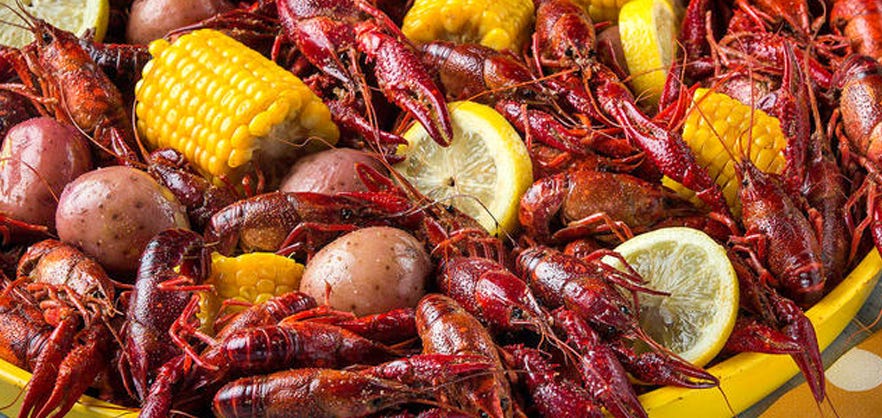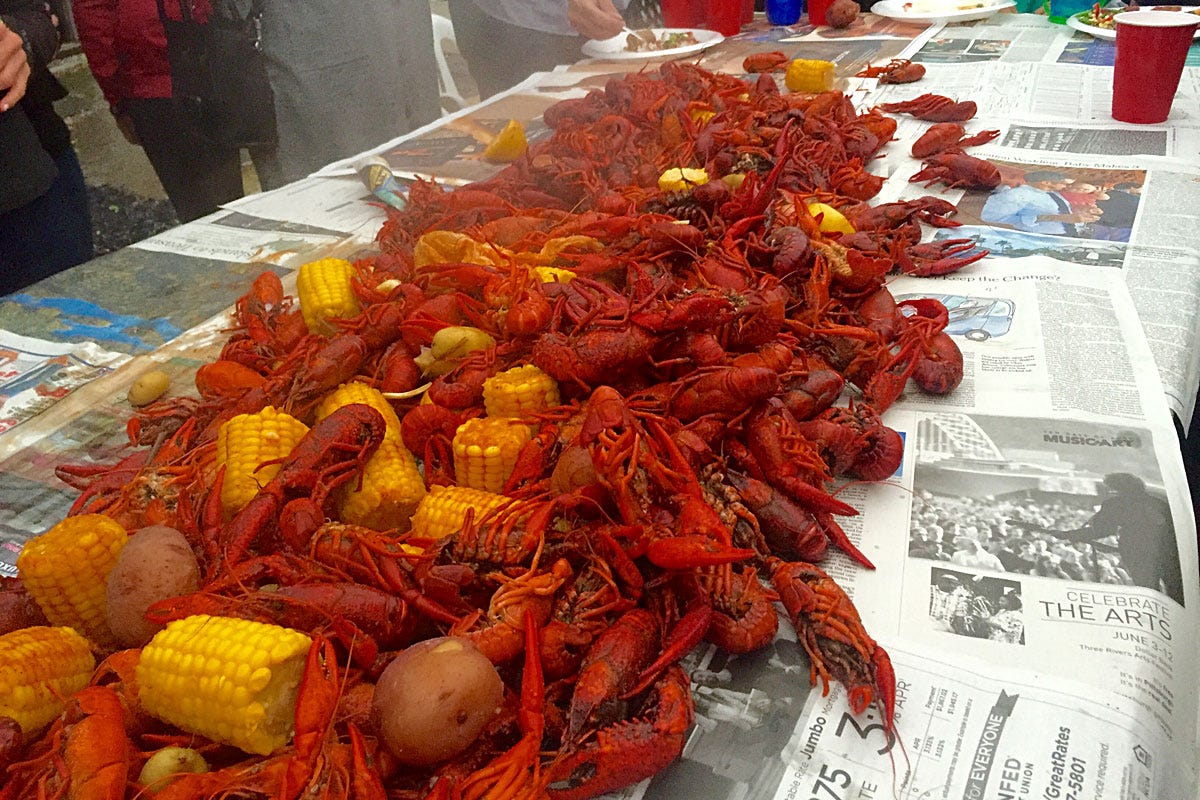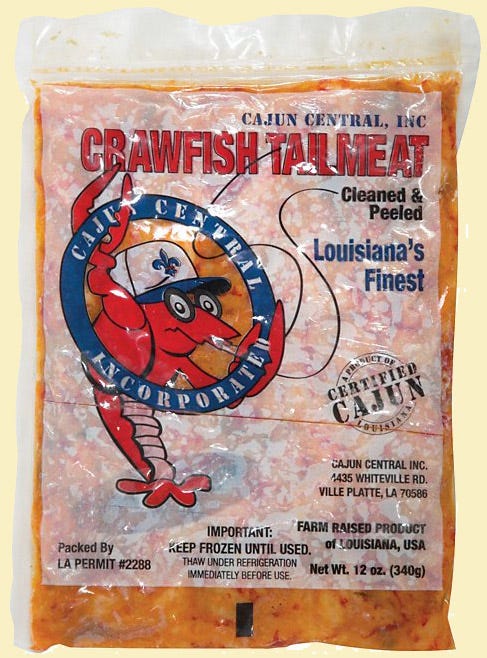
“Jambalaya, crawfish pie and filay gumbo …
Hank Williams, “Jambalaya”
The taste of boiled crawfish tail meat resembles a cross between lobster and shrimp, depending on the seasonings used. If you’re not prepared for the taste it will, as your Cajun friend might say, “make yo’ tongue lap yo’ brain, cher”!
What might be called the three major food groups in Cajun Louisiana are boudin, crawfish and gumbo and it almost doesn’t matter how you make them if you keep it simple.
Boudin is a mixture of pork fat and meat, cooked rice, onions, green onions, parsley, salt and red and black pepper stuffed into a sausage casing and gently poached in stock. Gumbo, as my Cajun friend, Savy Augustine once told me, is “a roux you add stuff to,” thereby indicating the importance of a dark roux in Cajun cooking. A whole lot of Cajun cooking.

Crawfish need to be boiled in a “tea” made with Zatarains Crab Boil, (or a similar option of your choice) a cut-up orange, a quartered onion, a cut-up lemon, and some black pepper Bring to a boil enough water to cover 15 pounds of whole crawfish, add the seasonings and vegetables and bring to a boil for 10-15 minutes. Then put the crawfish in the pot and turn the heat off after another 10 minutes. Allow the crawfish to “steep” for 20 minutes, drain and eat. A single batch ought to serve 4.
Then use the same seasoned water for the next batch. And the next. And the next.
“Money won’t make you happy. But crawfish will.
And that’s just about the same thing.”

There are two regions that make up the Cajun areas of south Louisiana. Settlements and towns near the Gulf of Mexico are distinguished by a bayou culture known for fishing trapping and hunting. Parishes (counties) to the north are hosts to cattle ranches and rice farms and it’s from those flooded rice farms that much of Louisiana’s crawfish crop is harvested.

Crawfish farms aren’t just for crawfish. The animals are “planted” live on rice farms, and in a clever take on crop rotation, those crawfish feed on the remains of rice paddies from the previous season. The result is sweeter than wild-caught crawfish that feast on algae, plankton and insects. As a bonus, we get to have all that rice for our tables.
During harvest the smaller crawfish that don’t qualify for immediate packing are culled and returned to the rice paddies where they grow big and fat for next season’s catch. Rarely, you might be able to find frozen crawfish tail meat in one of the big-name stores. Or find it online. It will already have been cooked so just add it to whatever you’re making where it will re-heat and taste about as good as fresh-caught.

There is no age separation at social events in Cajun country. Little towhead toddlers wander freely underneath tables and the legs of standing adults and those adults range across the chronological spectrum. No “old folks at home” here. No babysitters needed, either.
Mardi Gras is not limited to New Orleans every year, but is also celebrated in the small town of Mamou at the same time —- the day before Ash Wednesday. This is the begining of Lent, a practice among Catholics of abstaining from things you like until Easter as a sort of pennance. Its timing is determined by the date on which Easter falls (the first Sunday after the first full moon after the Spring Equinox).


Of course you can do more with crawfish than just boil it. One of the best alternatives is to make crawfish etouffee which, if you’re lucky, is almost guaranteed to be prominent on the menu in Heaven.
Find out how to make this fabulous entree yourself. Become a paid subscriber and you’ll have it … plus a recipe with each subsequent edition.
Keep reading with a 7-day free trial
Subscribe to Eat Your History to keep reading this post and get 7 days of free access to the full post archives.





